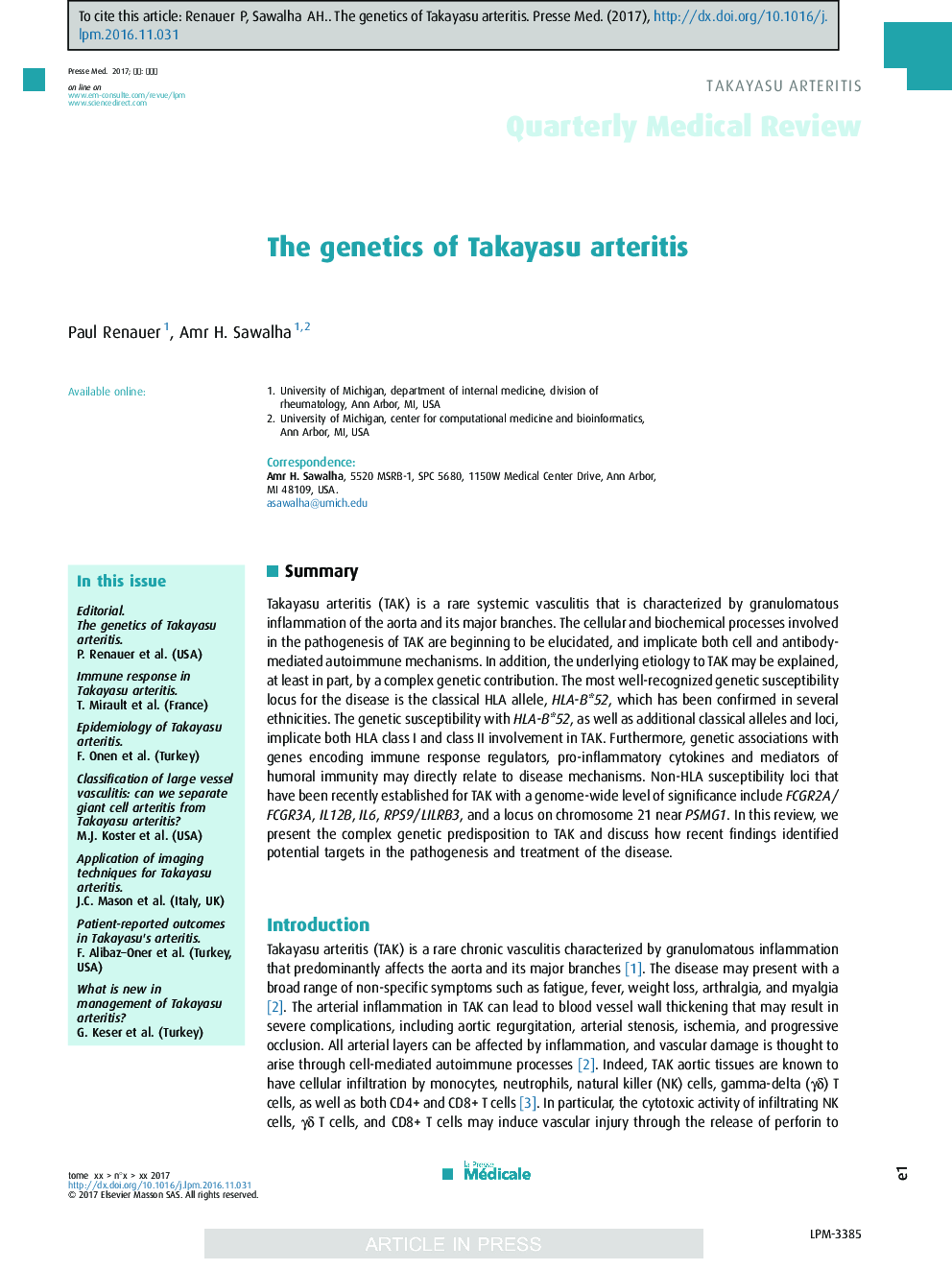| Article ID | Journal | Published Year | Pages | File Type |
|---|---|---|---|---|
| 5682780 | La Presse Médicale | 2017 | 9 Pages |
Abstract
Takayasu arteritis (TAK) is a rare systemic vasculitis that is characterized by granulomatous inflammation of the aorta and its major branches. The cellular and biochemical processes involved in the pathogenesis of TAK are beginning to be elucidated, and implicate both cell and antibody-mediated autoimmune mechanisms. In addition, the underlying etiology to TAK may be explained, at least in part, by a complex genetic contribution. The most well-recognized genetic susceptibility locus for the disease is the classical HLA allele, HLA-B*52, which has been confirmed in several ethnicities. The genetic susceptibility with HLA-B*52, as well as additional classical alleles and loci, implicate both HLA class I and class II involvement in TAK. Furthermore, genetic associations with genes encoding immune response regulators, pro-inflammatory cytokines and mediators of humoral immunity may directly relate to disease mechanisms. Non-HLA susceptibility loci that have been recently established for TAK with a genome-wide level of significance include FCGR2A/FCGR3A, IL12B, IL6, RPS9/LILRB3, and a locus on chromosome 21 near PSMG1. In this review, we present the complex genetic predisposition to TAK and discuss how recent findings identified potential targets in the pathogenesis and treatment of the disease.
Related Topics
Health Sciences
Medicine and Dentistry
Medicine and Dentistry (General)
Authors
Paul Renauer, Amr H. Sawalha,
